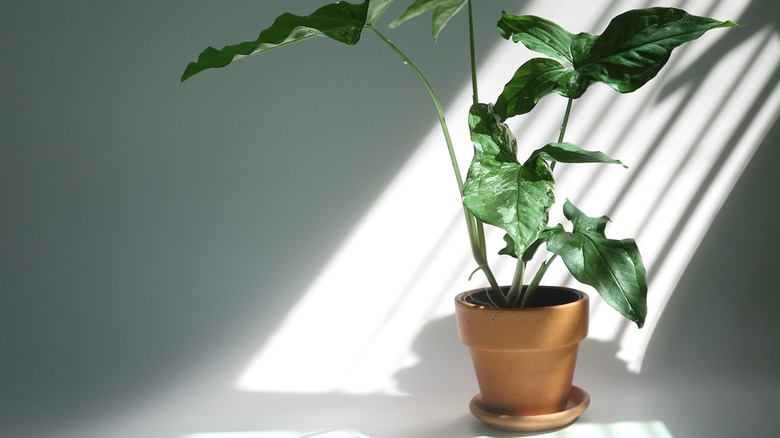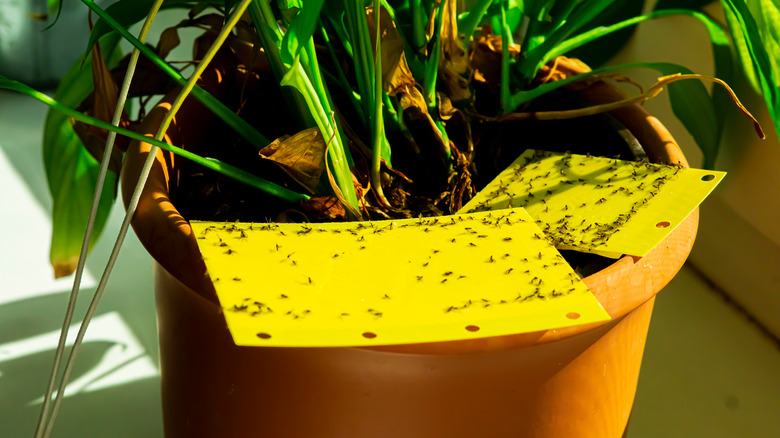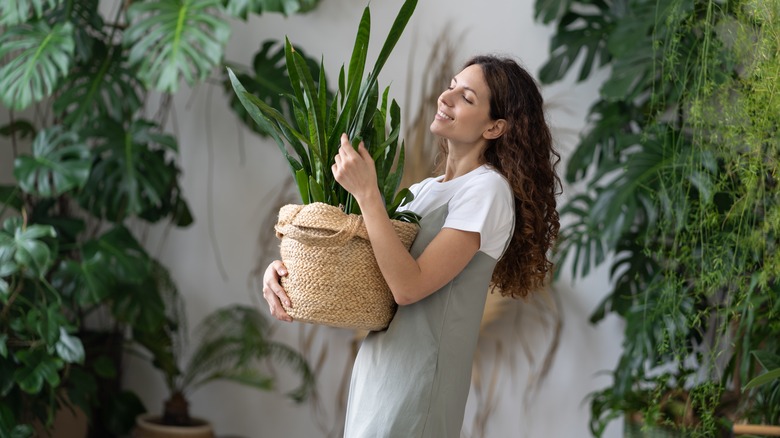The Common Saucer Mistake That Could Be Killing Your Houseplants
Despite your best efforts, you might sometimes find your plants dying before their time. It's frustrating, especially when you think you've done everything right, from watering regularly to providing ample sunlight. However, there's a common oversight many plant owners make that could be putting their leafy friends at risk: improper use of plant saucers. Yes, that simple dish under your plant pot might be the culprit behind your gardening woes when not used correctly. Plant saucers are designed to catch excess water that drains from the pot, preventing spills on your floors and furniture. You water your plants, and then the excess drains out, and ideally, that's where the story ends.
However, while the saucers serve an essential protective function, if the water remains in the saucer and the pot sits in this excess moisture, the soil can reabsorb it, keeping the root zone too wet. This can lead to overwatering your plant, which happens more often than you'd think. The solution is not as straightforward as just emptying the saucer after watering. You want to make sure your green buddies get just the right amount of water—enough to thrive but not so much that they end up sitting in a puddle that could lead back to their roots and create issues.
The moisture problem: signs to look out for
Dealing with plant saucers effectively boils down to steering clear of the overwatering trap. It's crucial to remember that while roots soak up water, they also require air to stay healthy. When they're swamped with water continuously, they suffocate, leading to a detrimental condition where the roots start to break down, also known as root rot. This root decay not only harms the immediate root area but can also spread, potentially causing irreversible damage to your beloved plants.
Wondering how to tell if your plants are getting more hydration than they can handle? There are several signs to look out for. First off, if you notice your plant's leaves turning yellow or brown and have a soggy feel, it's a clear distress signal. Interestingly, too much water can make plants look as if they're parched, with leaves wilting and drooping because the waterlogged roots are struggling to distribute water throughout the plant. Another red flag is the appearance of fungus gnats, those tiny dark flies that seem drawn to overly moist environments. Their presence around your plants usually means the soil is consistently too damp—a paradise for these pests. Also, keep an eye on the soil. If it perpetually feels wet or if there's a musty smell emanating from the water, it's a strong indication that it's time to adjust how you're watering and managing the saucers beneath your pots.
Saucer solutions: best practices
Knowing the potential problems associated with plant saucers is just the start. You also need to understand your plant's water requirements. Some plants, like succulents, don't need that much water at all and are most susceptible to root rot. So, a saucer might not be a good idea for such plants. Also, if you leave your houseplants on a balcony where the chances of catching rainwater are high, be sure to remove the saucer during rainy periods.
So what happens if you end up with too much water in the saucer and you've got a hefty pot that's tough to lift? Here's a handy trick: use a turkey baster. It's perfect for drawing out excess water without straining your back or risking your plant's health. Now, onto ensuring free drainage—a crucial step for healthy plants. Not all pots are created equal. The best options for drainage are pots with multiple holes at the bottom. These allow water to flow through the soil and out of the pot, preventing water from pooling at the base. If you're dealing with a pot that lacks adequate drainage holes, consider adding more or opting for a different pot. Terracotta pots are a fantastic option as they're porous, allowing soil to breathe and water to evaporate more efficiently.


